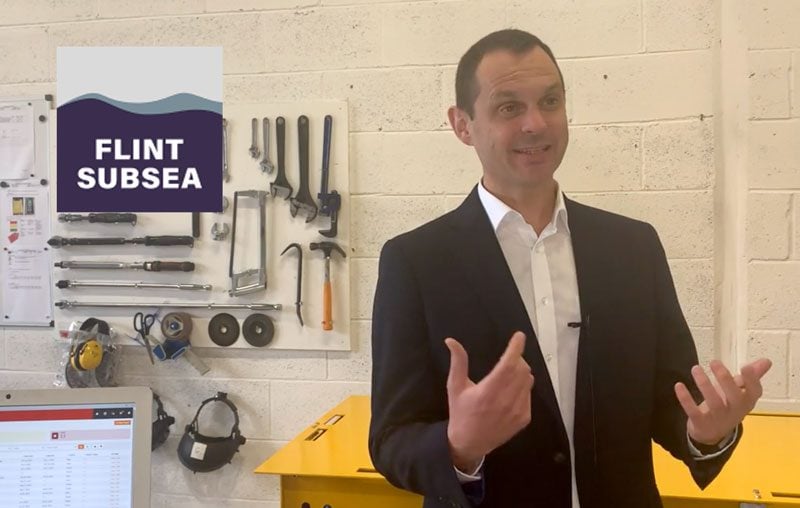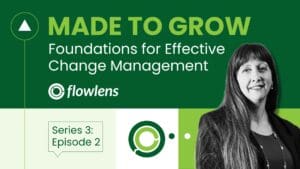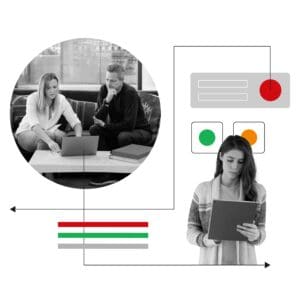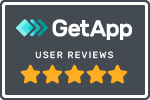The manufacturing industry as a whole relies heavily on quality accreditations and audits as a means of self-regulation and ensuring quality outputs. Competent accrediting authorities help ensure that products are manufactured safely and at sufficient levels of quality. In addition to this, customers often require that their suppliers have the relevant accreditation.

According to Gareth Black, Technical Director at Flint Subsea, “Customers have a prerequisite that we have a compliant ISO 9001 system in place.”
However, implementing — and more importantly, maintaining — conformance to a specific accreditation is a complex and time-consuming process, especially if starting from scratch. This article will explain how an MRP system like Flowlens can streamline accreditation and audits for any manufacturing business and make it easier to maintain compliance.
- Easy access to information
Most quality accreditations and audits tend to require extensive record-keeping primarily to ensure traceability throughout the business process. For manufacturers without an MRP system, this information tends to be scattered all over the company’s physical and digital space. If the information is not easily accessible and stored logically it loses all its usefulness and essentially turns the accreditation into a useless paperwork exercise.
However, with an MRP system, audit-ready quality management system data can be stored logically; as Ray Dodd, GM at On-Systems says, “All information is linked to a job or asset number.”
This allows for the benefits of an ISO 9001 accreditation, for example, to really shine through and can help streamline accreditation and audits.
- Real-time examples of compliance
The job of an auditor is to determine whether or not a company is actively implementing the accreditation’s requirements. Most companies will spend the days and weeks before an audit in a mad rush trying to collect proof that the system is being followed. And when the needed documentation is missing, band-aid solutions are applied to account for missing information and broken chains of traceability.
MRP systems like Flowlens streamline accreditation and audits by making it easy to demonstrate full-process compliance to an auditor. These systems can help demonstrate in real-time how the system is being actively used not only to achieve the accreditation requirements but also to provide real benefit to a company.
Ray Dodd explains,“Our 3-year reset lasted 6 hours and it was all demonstrated through Flowlens.”
- Accreditation requirements are actively applied
Due to the ease of operating a system like Flowlens, the accreditation requirements can be easily built into the software. When the entire company makes use of the MRP system and uses it as a centralised tool, the system can be woven into the fabric of all workflows. This makes it easy to get buy-in from the rest of the team as it allows for a simple and logical method of keeping track of information that ultimately makes their jobs easier and more efficient while also helping streamline accreditation and audits.
This contrasts with efforts to implement a system the old fashioned way with multiple written procedures that few people read and even fewer implement. Flowlens allows the system to become an integral part of how the company runs.
- Standardised templates
Many accredited systems require standardised templates to keep track of specific information. Typically these would take the form of multiple word documents that are saved on a central server; whenever a template is required, it must be opened, filled in and saved in a different location. This is, however, not a very intelligent system as the information in the word document is not easily accessible and it becomes very tempting for people to simply skip filling out the template.
The task of creating forms in Flowlens is simple, and the necessary templates will automatically link with their associated project or asset number. This means that if a specific detail is ever required it can be very easily accessed. Even logging information is less painful because forms can be built with auto-complete fields as well as checkboxes and drop-down menus where appropriate. The aim is to make filling in the information and linking it to a job very simple, further helping streamline accreditation and audits.
- No need for a dedicated quality manager
Because the system is essentially automated, it reduces or eliminates the need for a dedicated quality manager. As Ray Dodd says, “The goal of any quality manager is to make themselves redundant.”
Flowlens achieves this by allowing for the accredited system to be integrated into the MRP software itself once and then allowing it to run without active management by a dedicated person. Any user can see if there is information missing or if a step has been left out which helps ensure compliance through collaboration and shared responsibility. In addition to this, a successful Flowlens system can obviate the need to hire new and expensive quality managers.
As Nathan Peel, Engineering director at Denatec describes, “It’s very expensive to bring in qualified quality managers.”
How can MRP help my company achieve accreditation?
Many people are inclined to ask the best time to implement a QMS like ISO 9001. The answer is always the same: right now. No benefit is gained from waiting until a customer requires it, as Nathan Peel notes,
“If you wait until a customer demands accreditation you will always be one step behind.”
Flowlens has the dual benefit of streamlining the overall business process while also making it easier to comply with any relevant accreditation. Implementing these systems along with an MRP system means that the quality management system itself will become central to the way the company runs. Audits will change from being a dreaded process to being as simple as pulling up some metrics from the Flowlens dashboard.
Ray Dodd, GM at On-Systems was happy to note, “We are always audit-ready with Flowlens.”
To learn how your company can also become audit-ready whilst implementing lean, end to end business processes, contact Flowlens today or start a free trial.





